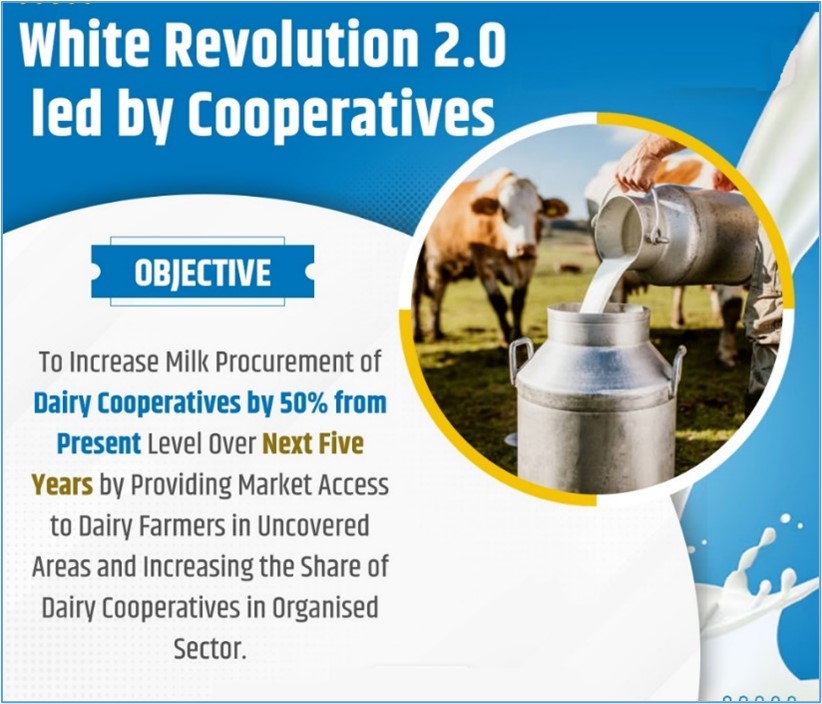PREVIOUS
White Revolution 2.0
September 26 , 2024
59 days
220
0
- The Operation Flood, launched in 1970, has ushered in the White Revolution and transformed the dairy sector in India.
- Dairy cooperatives procured 660 lakh kg of milk per day in 2023-24.
- The government wants to increase this to 1,007 lakh kg/ day by 2028-29.
- There are about 1.7 lakh dairy cooperative societies (DCSs), which cover around 2 lakh villages (30% of the total number of villages in the country), and 22% of producer households.
- These cooperative societies procure about 10% of the country’s milk production and 16% of the marketable surplus.
- In the states of Gujarat, Kerala, and Sikkim, and the Union Territory of Puducherry, more than 70% of villages are covered by dairy cooperatives.
- In the states of Uttar Pradesh, Uttarakhand, and Madhya Pradesh, and the UT of Jammu & Kashmir coverage is only 10-20%.
- In West Bengal, Assam, Odisha, Jharkhand, Chhattisgarh, Himachal Pradesh, and the smaller states of the Northeast, less than 10% of villages are covered.
- The national per capita availability of milk is 459 grams/ day, which is higher than the global average of 323 g/ day.
- This number varies from 329 g in Maharashtra to 1,283 gram in Punjab.
- India is the world’s top milk producer, with production having reached 230.58 million tonnes during 2022-23.
- In 1951-52, the country produced just 17 million tonnes of milk.

Leave a Reply
Your Comment is awaiting moderation.


